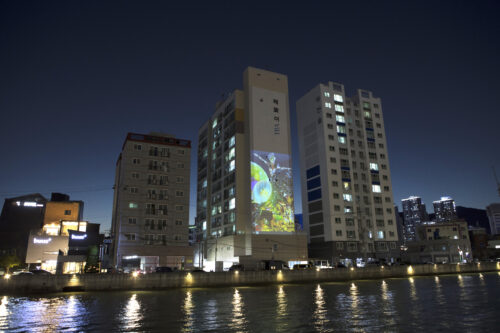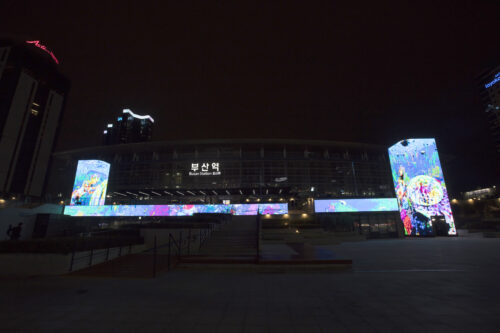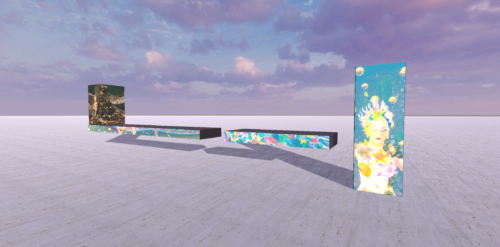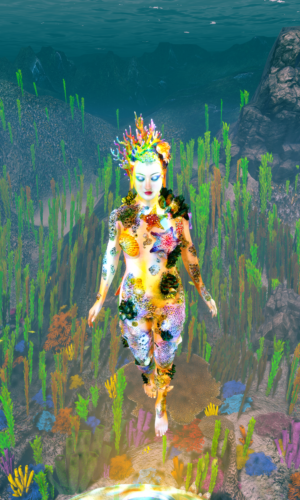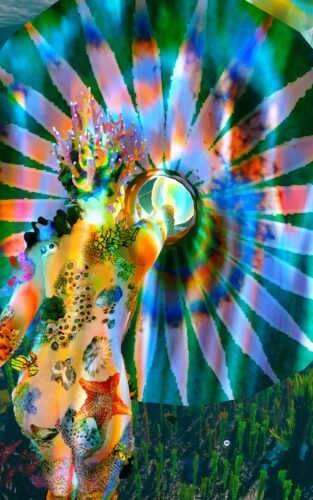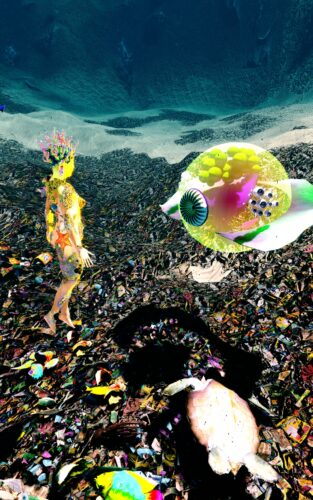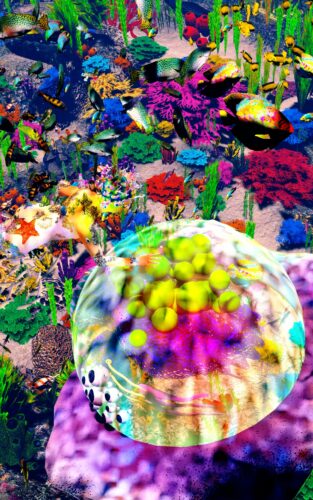O c e a n M a c h i n e , 2 0 2 1
2 versions: Single-channel & 3-channel.
07’10’’
Ocean Machine picks up from the end of an earlier work, Water Has Memory, by visualizing an invention that gets rid of microplastics through the usage of artificial intelligence: a translucent jellyfish-like creature with two eyes made of thousands of tiny lenses that can simultaneously see in all directions.
This work recalls the theory of ‘mythotechnesis’ as articulated by cultural theorist Simon O’Sullivan: “digital audio-visual practices that are involved in a speculative ‘future-fictioning’ of the real.” The work is located within the very ‘real’ realm of oceanic pollution, even as it imagines the speculative possibilities of myth and high technology. But the non-linear nature of The Ocean Machine plays into the temporal non-logics of science fiction; its looping nature does not allow for either a utopian or a dystopian reading of this ‘future-fictioned’ world, submerging the audience into a recursive present, a flattened cybernetic space-time. Rather than producing textual evidence for (or a solution to) this extant reality, Kim immerses the viewer into the visual semiotics of two imagined creatures– the Dragon Goddess and the ‘Machine’ interacting with and approaching one another from two ends of a teleological spectrum of the human and the non-human: myth (the human entangled with the non-human) and post-internet technology (more-than- human created by the human), dissolving the demarcations among them. But it also subverts traditional Continental philosophy and science fiction theory by following the Dragon Goddess, creating a narrative locus within the historical collective imagination of Korean cultures. This work is then embedded within and produced through a series of interrelations across non-/human assemblages: artificial intelligence, human audiences, myths, and the artist.
(Text modified from curatorial text by Ritika Biswas)
